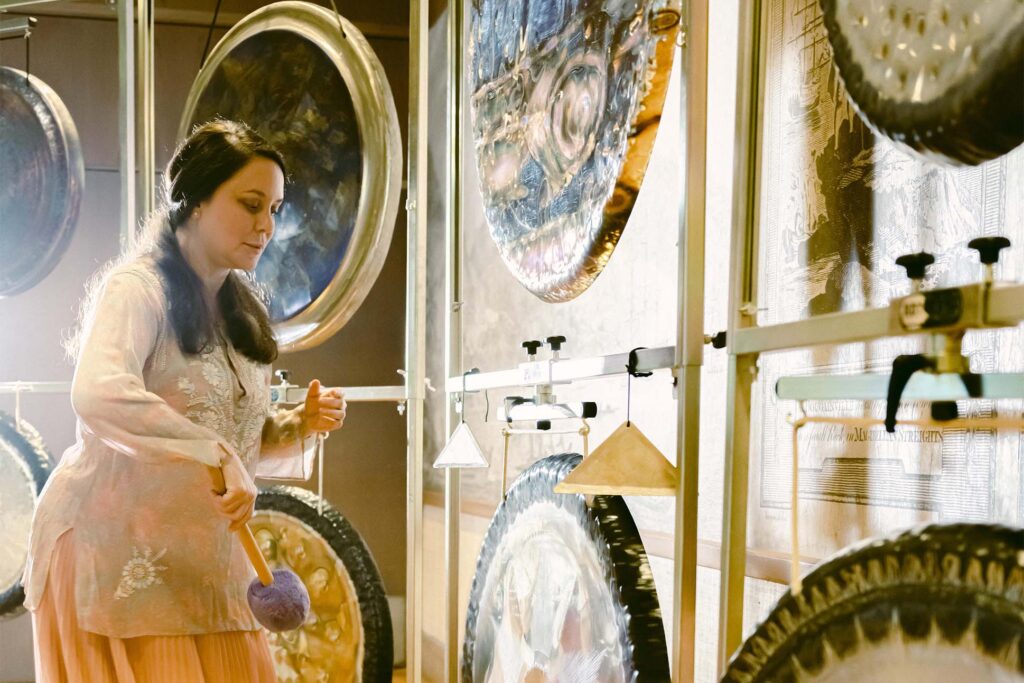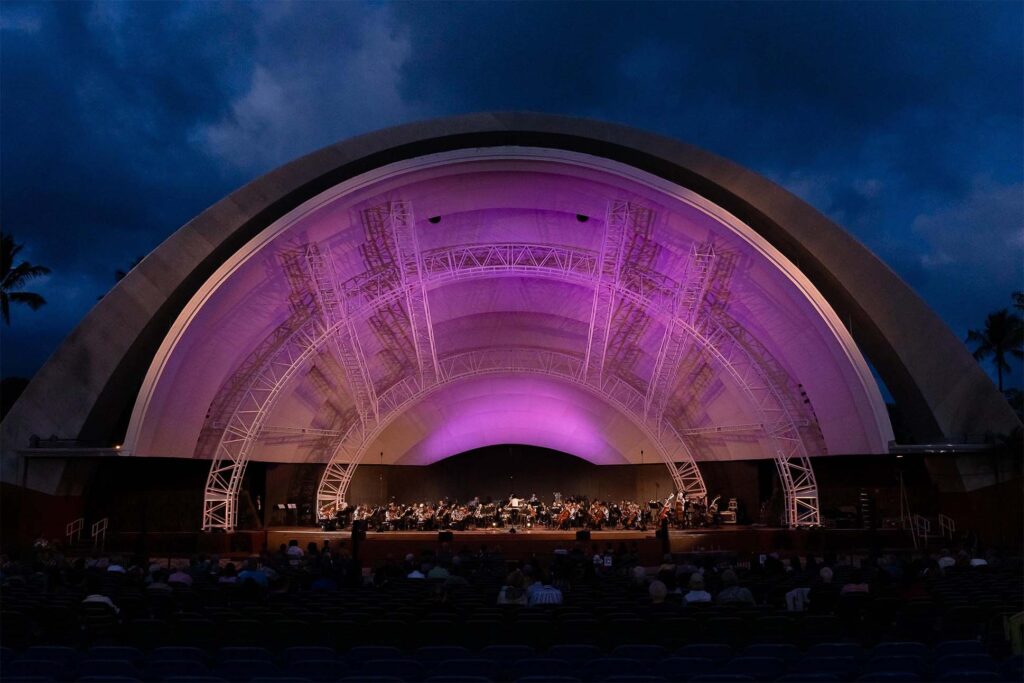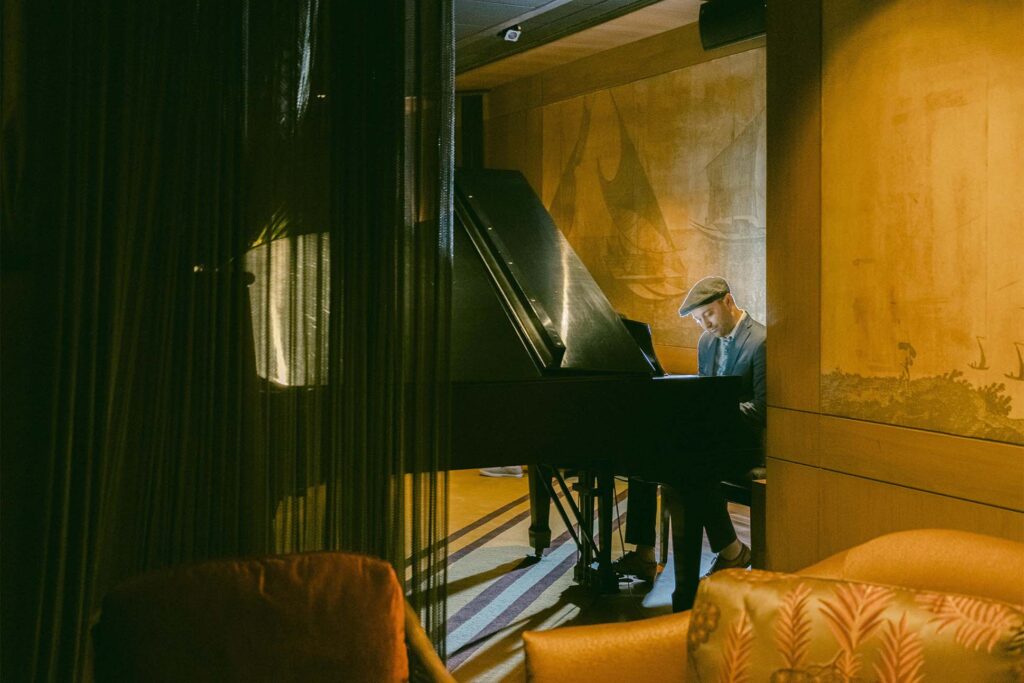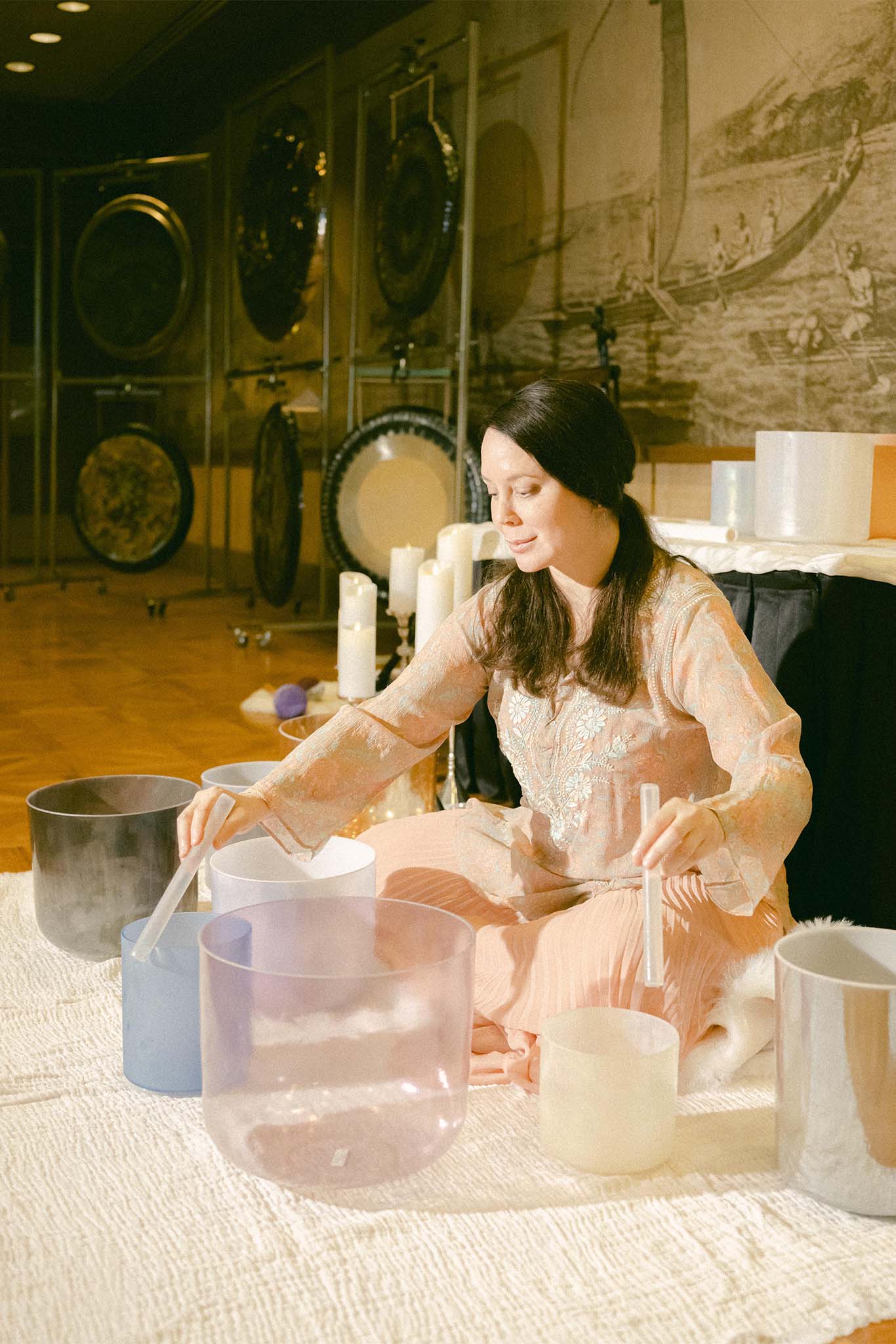I’m lying on a chaise lounge with my eyes closed, and the sound of a gong is echoing in my ears. The intermittent vibrations are startling at first, then they become more and more rhythmic. Over the next two hours, musician Michelle Pirret walks lightly between the chaises on the Garden Terrace of Halekulani, creating sounds using an array of items that she refers to as her “band”—singing bowls made of quartz, eucalyptus leaves, a bowl of water. Pirret is taking me on a “sonic leap.”
This is the name Pirret has given to her method of sound therapy, a type of meditation designed to lead people into deep relaxation and expand their consciousness. Sound therapy has origins in the East, but it has become increasingly popular in the West as a means for grounding oneself in an increasingly fast-paced world. The different instruments wrap you in a “cocoon of sound,” Pirret says, so that you “lose your feeling of time and space.” Each session is different, as is each person’s experience.

The theory behind sound therapy is that sound waves within a certain range of hertz, like the vibrations of a gong, can coax your brain into a state of wakeful relaxation known as the alpha state. A small study from 2017 found that people who experienced Tibetan singing bowl meditation reported feeling less tension, depression, and anger. “Utilizing vibration and frequency allows sound to move through the body and move stagnant energy,” Pirret says. “You will find that you will be able to leap over what is impairing you in life.”
Pirret stumbled upon sound therapy about 20 years ago, when her mother developed early-onset Alzheimer’s at age 50. Seeking ways to cope with the distress of witnessing a parent’s health decline, Pirret signed up for a sound therapy session in New York and felt moved by the experience.
“That was a turning point for me,” she says. She dedicated herself to studying the practice, traveling to study under influential practitioners in Switzerland and Poland.
Sound therapy became a way for her to communicate with her mother, who lost the ability to speak. She has since facilitated sessions all over the world, from New Mexico to New York to Hawai‘i.
By a twist of fate, Pirret has been a part-time resident of Hawai‘i since February 2020. She had flown to Hawai‘i Island for a musical collaboration with jazz artist Bobby McFerrin and was planning to leave for an artist residency in the West Indies when the pandemic hit and shut down travel. She stayed for nine months before moving to O‘ahu and now splits her time between Hawai‘i and New York. Ahead, she shares some of her go-to destinations for creative inspiration on the south shore of O‘ahu.
Shangri La Museum of Islamic Art, Culture & Design

With its stunning Islamic artworks and equally stunning views of the ocean, Shangri La has enchanted Pirret since her first visit in 2021, when local artist Kamran Samimi was exhibiting Sanctuaries, a series of sculptures he created during his artist residency at the museum the year prior. His work alluded to elements of nature and a spiritual journey in a way that resonated with Pirret’s work in sound therapy. Since then, it’s been “my secret dream to do a concert there,” she says.

Oriented around a seashell-shaped dome designed by the late American architect Lewis P. Hobart, the Waikīkī Shell at Kapi‘olani Park has been Honolulu’s premier outdoor music venue since 1956. It was on the Shell’s sprawling lawn amid views of nearby Diamond Head that Pirret saw the Honolulu Symphony Orchestra perform, and it’s where she returns for “pure, live music outdoors.”

A cozy cocktail lounge tucked inside Halekulani, Lewers Lounge is a tribute to all things jazz. “It’s my taste of New York in Hawai‘i—I feel so at home there listening to Tommy James play. I feel like I’m at Carlyle,” Pirret says, referencing the opulent cabaret at New York City’s famed Carlyle Hotel, known for serving as a hideaway for royalty, celebrities, and politicians and for drawing legendary performers such as Bobby Short, Judy Collins, and Eartha Kitt. With its low-lighting and intimate, upscale aesthetic, the room bursts with a sophisticated energy that Pirret can’t get enough of.


